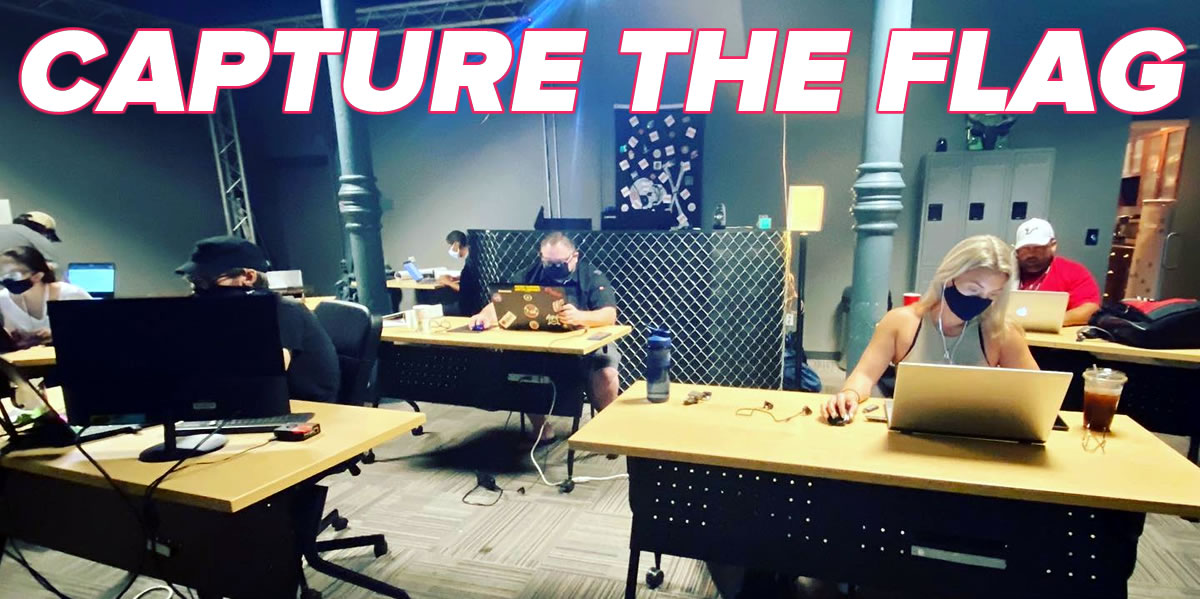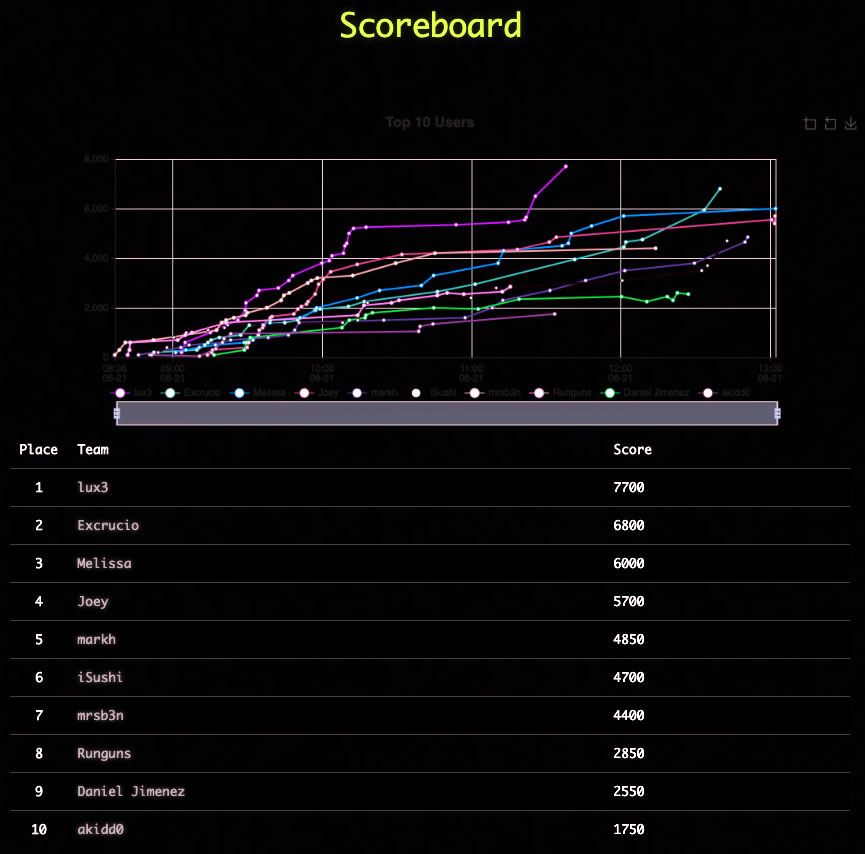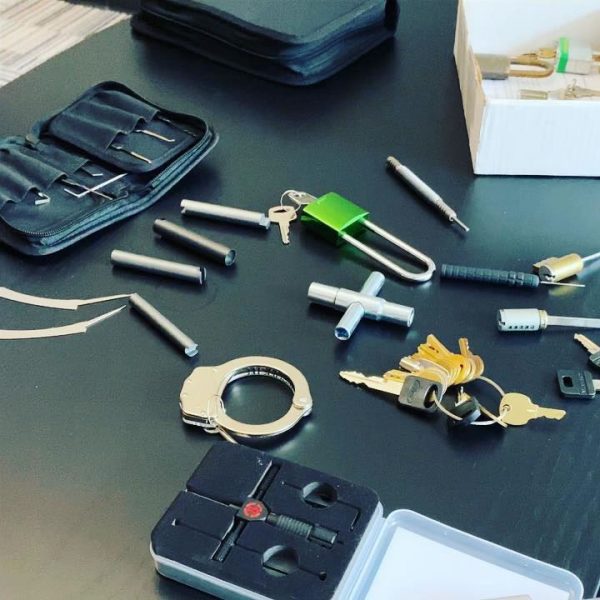
The final event of UC Baseline, The Undercroft’s cybersecurity training program, was the Capture the Flag competition, which took place last Friday morning.
 In computing “Capture the Flag” events, the flag isn’t a physical one, but some kind of challenge. Sometimes, it’s something you need to retrieve from a program, website, or even a piece of hardware with an intentionally built-in vulnerability that you must exploit. Sometimes it’s a problem or puzzle you must solve. It may also be a trivia challenge.
In computing “Capture the Flag” events, the flag isn’t a physical one, but some kind of challenge. Sometimes, it’s something you need to retrieve from a program, website, or even a piece of hardware with an intentionally built-in vulnerability that you must exploit. Sometimes it’s a problem or puzzle you must solve. It may also be a trivia challenge.
Solving each challenge earns you a specified number of points, with the tougher challenges being worth more points. The player with the most points wins.
Since it wasn’t scheduled as a day of actual class — the last day of class was on Wednesday — I’d booked a doctor’s appointment for that morning. A plumbing problem also required me to be at home for a little bit.

By the bye, if you’re looking for a great plumber in Tampa, I highly recommend Joshua Tree Plumbing.
The challenges
Still, since most of the challenges were posted online and since I’d never participated in a CTF before, I decided to try anyway. I decided to treat my schedule as if it was a golfer’s handicap. Since some of the challenges were just questions where you’d either select an answer or type one in, I did them on my phone while waiting for the doctor.
In between a couple of car trips, I managed to eke out a little over an hour and a half of time in the CTF, so I think I placed rather well, all things considered:
 Here’s a sampling of some of the challenges:
Here’s a sampling of some of the challenges:
- Who’s on 80? (300 points):
Scan the host at (IP=10.10.1.1) and enumerate the service running on open port, 80.Use the following syntax for your answer:nmap [scan type] [ options] [target] - The Big Kahuna, part 1 (1200 points):
Using the Linux OS and boot method of your choice (VM or live boot):Add the “Kali Linux Headless” Repository to your repository list. Download and install the Kali Tools Headless package to your Linux operating system. Get the Metasploit Framework running. Show one of the staff when you’re finished. - Don’t cross the streams! (500 points):
An attacker got onto a machine and created a rogue user. Dig through the attached PCAP file and identify the rogue user.The flag is the user name. This flag IS case sensitive. - Execution is everything! (400 points):
What are the four different execution policies for Powershell?- Restricted, Unrestricted, AllSigned, RemoteSigned
- Unrestricted, Restricted, AllSigned, PartiallySigned
- Restricted, Unrestricted, PartiallySigned, RemoteSigned
- Unrestricted, Restricted, PartiallySigned, UnSigned
- Pick these locks (a buttload of points):
A couple of Python solutions
I solved a couple of the challenges with Python, and I’m sharing them here (with the permission of the instructors, of course):
Are you sure? (200 points)
Your answer lies in the 1’s and 0’s…
0010111 00001111 00010111, 00011001 00001111 10101 00000001 00010010 00000101 00010010 00001001 00000111 00001000 00010100(Make sure to use the comma, and spaces correctly)
My first instinct was to copy these numbers, into a text editor, stick 0b in front of each one, and then turn the sequence into a Python list:
numbers = [0b0010111, 0b00001111, 0b00010111, 0b00011001, 0b00001111, 0b10101, 0b00000001, 0b00010010, 0b00000101, 0b00010010, 0b00001001, 0b00000111, 0b00001000, 0b00010100]
I pasted the list into a Python REPL and then displayed its contents, to see the numbers in decimal:
>>> numbers [23, 15, 23, 25, 15, 21, 1, 18, 5, 18, 9, 7, 8, 20]
All the numbers were between 1 and 26 inclusive, suggesting letters of the alphabet.
The ASCII/Unicode value for “A” is 65. If you offset the numbers by adding 64 to each, and then convert each number to a character, you should get the message:
>>> characters = map(lambda number: chr(number + 64), numbers) >>> list(characters) ['W', 'O', 'W', 'Y', 'O', 'U', 'A', 'R', 'E', 'R', 'I', 'G', 'H', 'T']
Remembering the instructions to “use the comma, and spaces correctly,” the answer is:
WOW, YOU ARE RIGHT
The big kahuna part 2 (700 points)
Using the Linux OS and boot method of your choice (VM or live boot):
Create a folder. In that folder, create 100 directories that are uniquely named incrementally (ergo directory1, directory2, etc.). Inside each of those 100 directories, create 100 directories that are uniquely named incrementally. Inside each of those 100 directories, create 100 files named incrementally (file1, file2, file3, etc.). The contents of each file should include the lyrics to the “Battle Hymn of the Republic” by Julia Ward Howe.
When complete, show a staff member.

This challenge is phrased in such a way that it could only have been written by our Linux instructor Cochise (pictured to the right).
Creating those 100 directories in Linux is a one-liner:
mkdir directory{1..100}
The rest of the task calls for some scripting.
I’m terrible at shell scripting. I’m perfectly comfortable with using the shell interactively, in that classic enter-a-line/get-a-response fashion. However, once I have to deal with those half-baked control structures, I tend to walk away and say “Forget this — I’m doing it in Python.”
Here’s a cleaned-up, easier to read version of my solution to the challenge. It assumes that there’s a file called battle.txt in the same directory, and that the file contains the lyrics to the Battle Hymn of the Republic:
import os
import shutil
import sys
for directory_number in range (1, 101):
# Create the directory.
directory_name = f"directory{directory_number}"
try:
os.mkdir(directory_name)
except:
error = sys.exc_info()[0]
print(f"Failed to create directory {directory_name}.\n{error}")
quit()
# Go into the newly-created directory.
os.chdir(directory_name)
# Create the files within the directory
# by copying battle.txt from the directory above
# 100 times, naming them file1...file100.
for file_number in range(1, 101):
filename = f"file{file_number}"
try:
shutil.copy("../battle.txt", f"file{file_number}")
except:
error = sys.exc_info()[0]
print(f"Failed to create file {filename}.\n{error}")
quit()
# Let’s go back up one directory level,
# so that we can create the next directory.
os.chdir("..")
I had a lot of fun on my first CTF, even if I got to take part in a fraction of it. I’ll have to join The Undercroft’s next one!

2 replies on “My time at The Undercroft’s Capture the Flag”
[…] my article about the Capture the Flag at The Undercroft in which I recently participated, I wrote about my solution to this particular […]
[…] and then a Capture the Flag competition and socially-distanced barbecue: […]